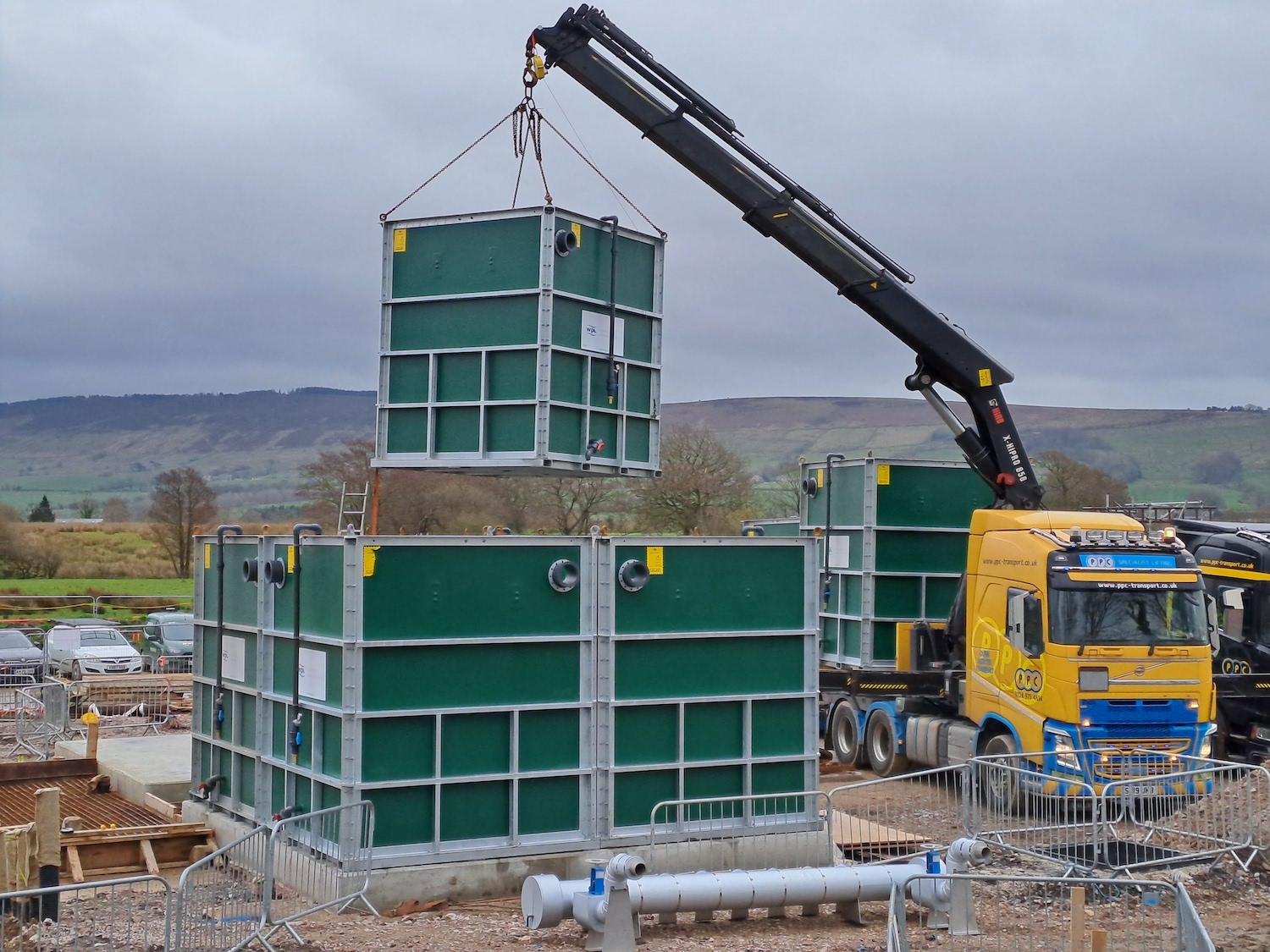Technology from WCS Environmental Engineering has been selected by United Utilities to deliver biological treatment at a new wastewater treatment works.
The UK utility is investing £8.2 million in the new facility in the village of Chipping in the Ribble Valley, Lancashire, a capital project designed to manage the area’s recent and future population growth. Due to complete in summer 2024, the new works will also improve water quality in Chipping Brook, a tributary of the River Ribble, which flows through the Yorkshire Dales National Park.
WCSEE has provided eight Hybrid-SAF™ – submerged aerated filter – units to serve as secondary treatment for biological oxygen demand (BOD) and ammonia removal. The units were installed in spring 2023 and configured in four streams to best fit the footprint of the site, which will serve a population equivalent of 2,000.
Once live, the units will be able to treat a maximum flow of 25 l/s, while maintaining compliance with environmental permit requirements of 8mg/l ammonia and 45mg/l BOD.
WCSEE utility manager Andrew Haywood said, “We are incredibly proud our Hybrid-SAFs have been chosen to provide an important stage of biological treatment at the new site in Chipping.
“The tried and tested technology is already successfully delivering robust biological treatment at other United Utilities sites. Modular in design and built offsite, the units can be used in works of any size, including where space and access is an issue.
“This was a key benefit at Chipping, where eight units were able to be configured in four streams, making best use of limited space. We look forward to the technology being commissioned next year.”
Modular in design, with a 30% smaller footprint than comparable technologies, WCSEE’s Hybrid-SAFs are built offsite and can be transported easily. The patented process technology employs a submerged moving-bed, fixed-film reactor, proven to treat wastewater with greater energy efficiency compared to traditional submerged SAFs.
For more information, visit: wcs-group.co.uk
Related articles:
The four stages of wastewater treatment plants







